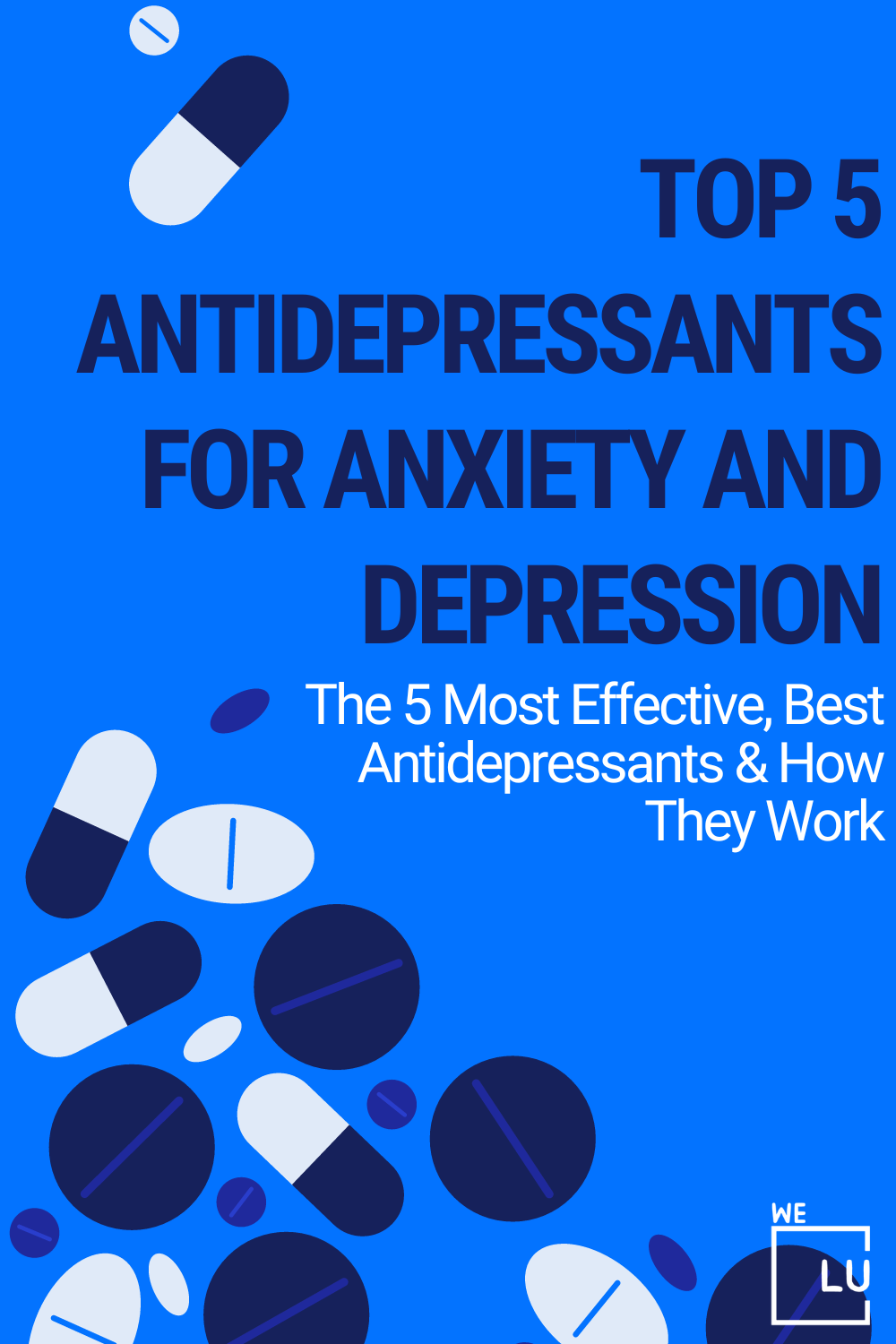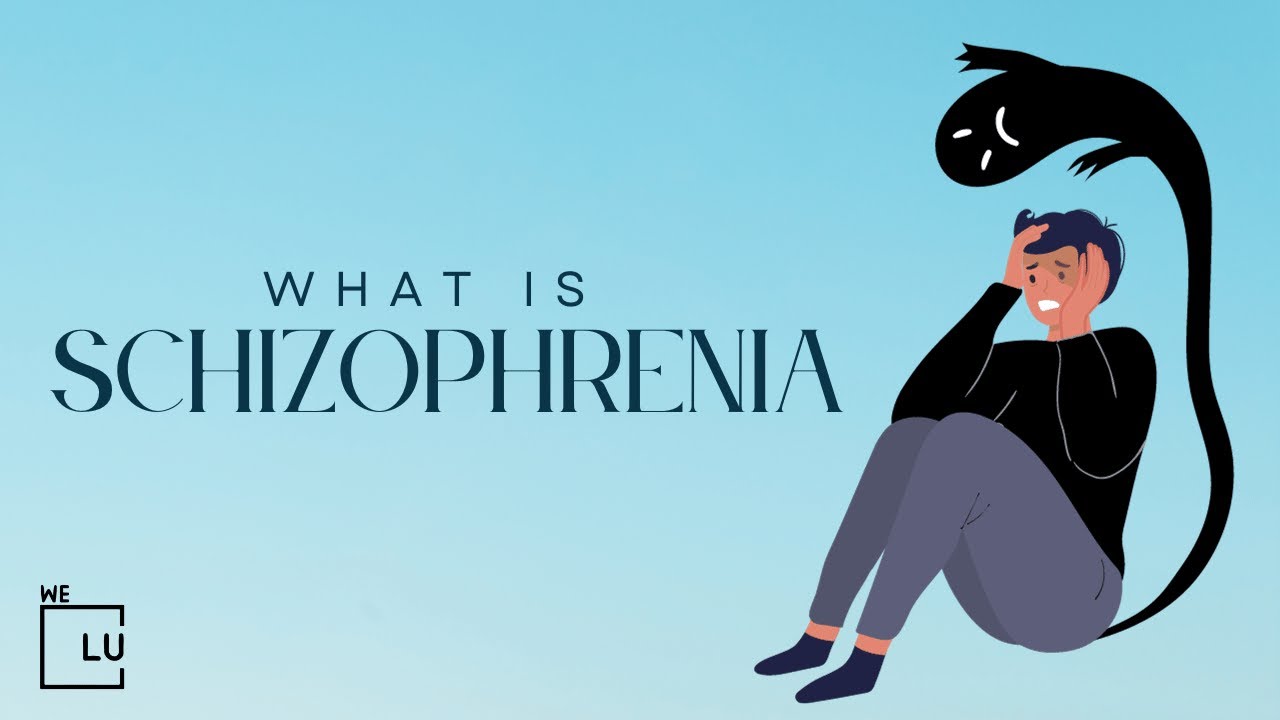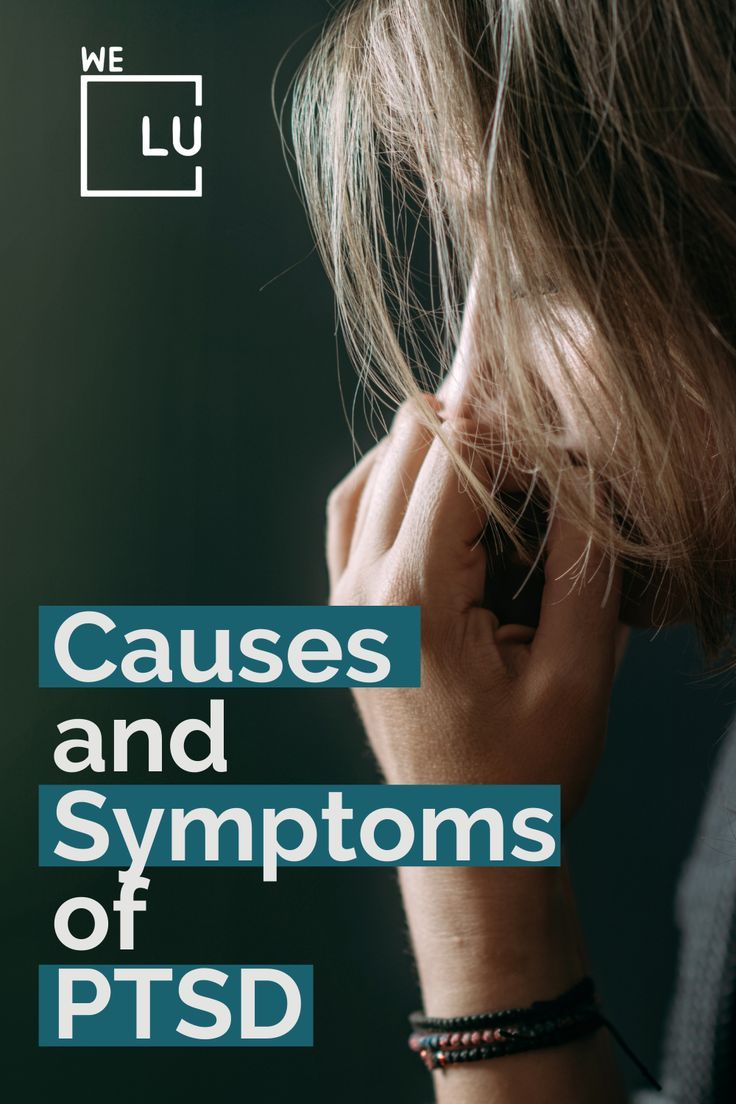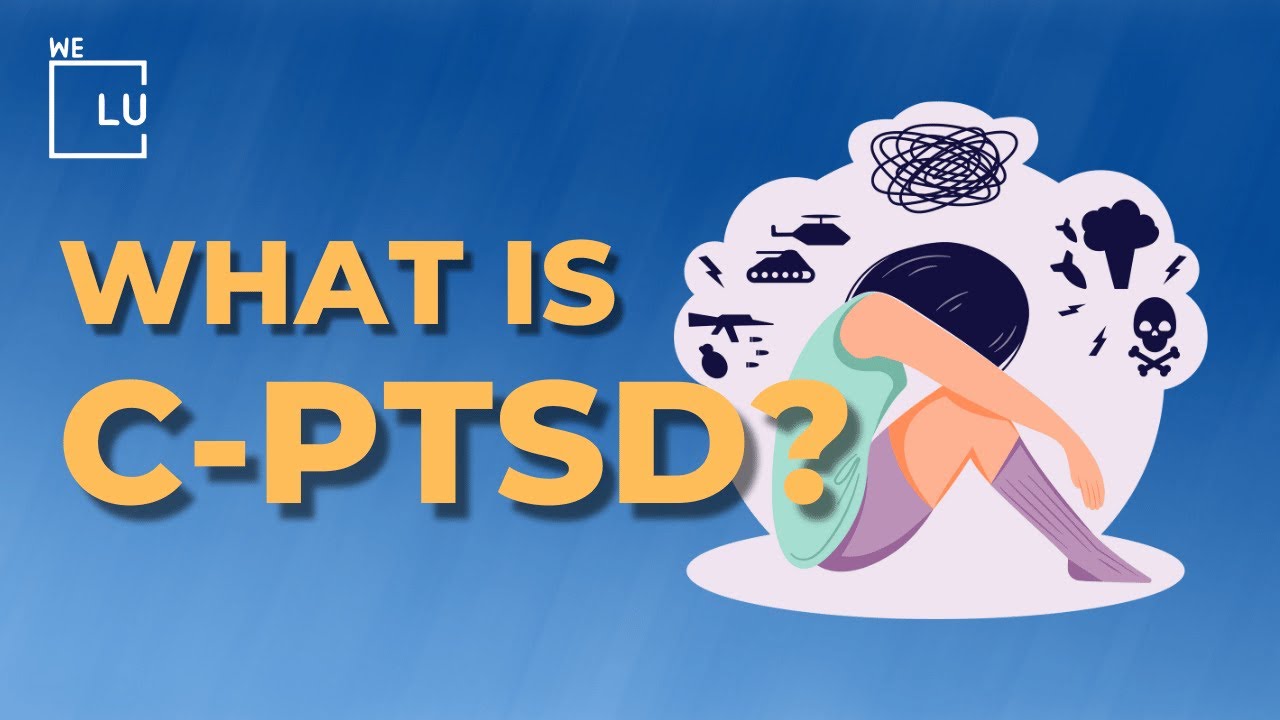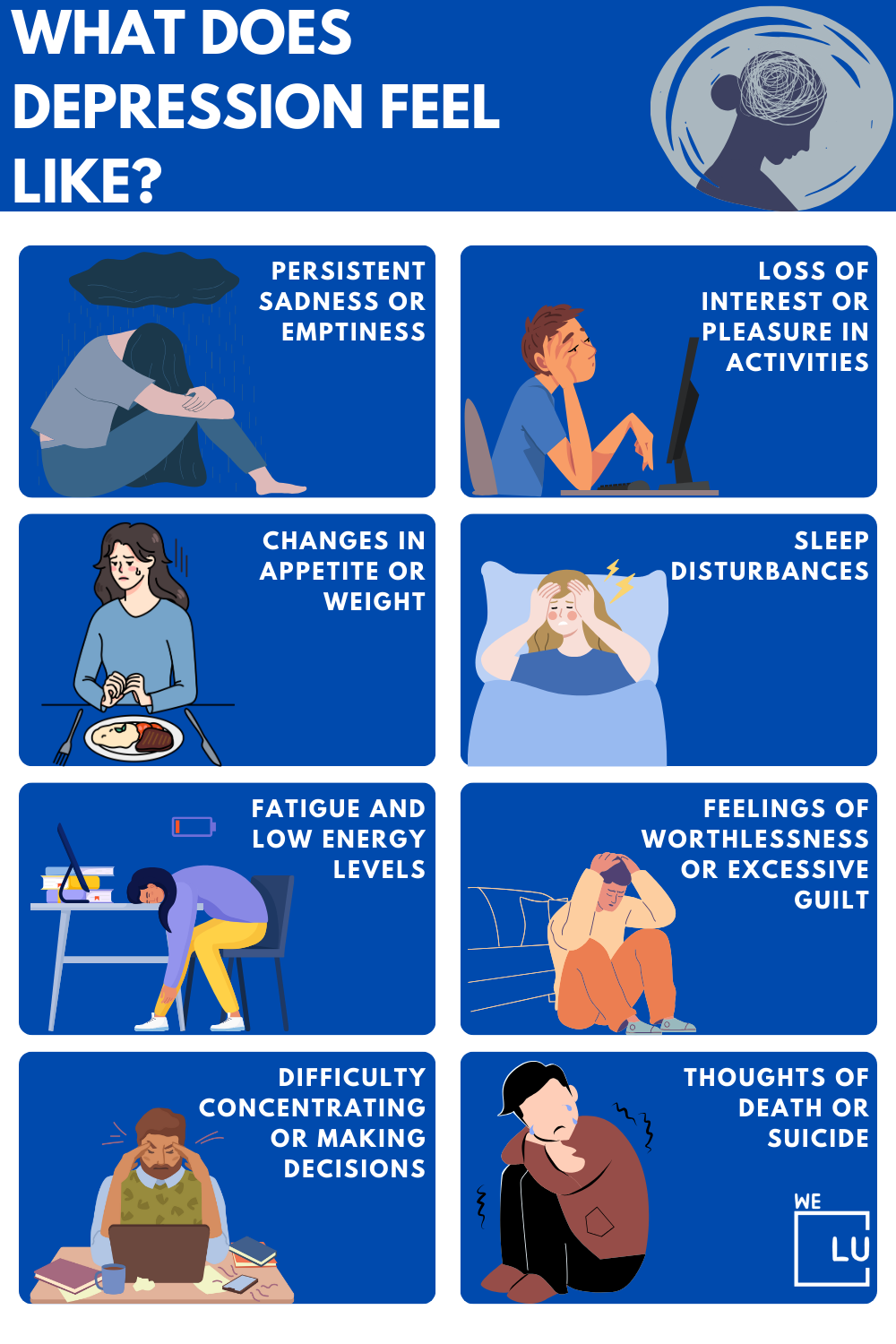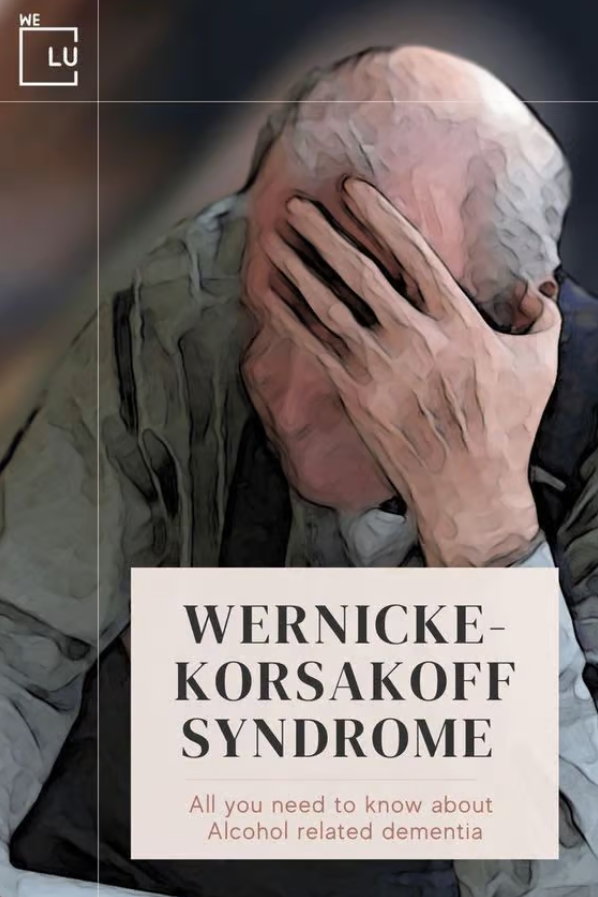Contamination OCD Overview
This form of OCD revolves around persistent and distressing fears of physical and emotional contamination, leading to debilitating symptoms. From the relentless dread of germs to the overwhelming desire for ritualistic cleansing, individuals grappling with Contamination OCD find themselves entrapped in a cycle of anxiety and compulsions. This article delves into Contamination OCD, shedding light on its symptoms that can disrupt daily life and outlining various treatment approaches that offer hope and relief. By exploring the manifestations of this condition and the strategies aimed at its alleviation, we aim to provide a comprehensive guide for better understanding and managing Contamination OCD.
At We Level Up Treatment Center, we understand the challenges posed by Contamination OCD, and we’re here to offer a comprehensive treatment journey tailored to your specific needs. Our integrated programs encompass a range of evidence-based therapies and interventions designed to help you manage your symptoms, regain your confidence, and pave the way for a brighter future.
What is OCD Contamination?
Obsessive-Compulsive Disorder (OCD) is a mental health condition characterized by persistent, unwanted thoughts (obsessions) and repetitive behaviors or mental acts (compulsions) aimed at reducing the distress caused by these obsessions. Contamination OCD, also known as Contamination OCD, is a specific subtype of OCD where the primary focus of obsessions and compulsions centers around the fear of contamination.
In Contamination OCD, individuals experience intense anxiety and fear regarding the possibility of coming into contact with germs, dirt, chemicals, illnesses, or anything they perceive as “dirty” or “contaminated.” These fears can extend to physical objects, surfaces, people, or intangible concepts like emotions or thoughts. The obsessions associated with Contamination OCD might include:
- Fear of Germs: An overwhelming fear of getting sick from touching objects or people believed to be contaminated.
- Fear of Illness: Worry about contracting a severe illness or disease from everyday activities or environments.
- Fear of Touch: A reluctance to touch particular objects, surfaces, or people due to the fear of contamination.
- Fear of Environmental Contaminants: Apprehension about exposure to toxins or chemicals present in the environment.
- Fear of Emotional Contamination: An irrational belief that certain emotions or thoughts are “contaminated” and should be avoided.
- Fear of Cross-Contamination: The fear that once-clean objects have become contaminated through indirect contact.
To alleviate the anxiety triggered by these obsessions, individuals with Contamination OCD engage in various compulsive behaviors or mental rituals. These behaviors often involve excessive cleaning, washing, sanitizing, avoiding certain places or situations, repeated checking, or seeking reassurance from others. Despite providing temporary relief, these compulsions reinforce the cycle of anxiety and obsession, perpetuating the disorder.
Contamination OCD can significantly impact a person’s daily life, relationships, and overall well-being. It’s important to note that the obsessions and compulsions in OCD are not proportional to the actual risk of contamination. Those with Contamination OCD recognize that their fears are irrational but struggle to control or dismiss them.
It’s essential for individuals experiencing Contamination OCD to seek professional help from mental health professionals experienced in treating OCD. With proper treatment and support, many people with Contamination OCD can learn to manage their symptoms and lead more fulfilling lives.


Skip To:
Learn More:
Get Help. Get Better. Get Your Life Back.
Searching for Accredited Dual Diagnosis Mental Health Centers Near You?
Even if therapy failed previously, or are in the middle of a difficult crisis, we stand ready to support you. Our trusted behavioral health specialists will not give up on you. When you feel ready or just want someone to speak to about counseling alternatives to change your life call us. Even if we cannot assist you, we will lead you to wherever you can get support. There is no obligation. Call our hotline today.
FREE 24/7 Dual Diagnosis Mental Health Services HotlineOCD Fact Sheet
OCD Overview
Obsessions with excessive ideas trigger recurrent behaviors (compulsions). Unreasonable worries and obsessions (compulsive behaviors) are hallmarks of obsessive-compulsive disorder.
OCD frequently centers on ideas like a dread of germs or the requirement to organize objects in a certain way. Symptoms typically appear gradually and change over time. Both conversation therapy and medication are used as treatments.
OCD Symptoms
Behavioral: compulsive behavior, agitation, compulsive hoarding, hypervigilance, impulsivity, meaningless repetition of own words, repetitive movements, ritualistic behavior, social isolation, or persistent repetition of words or actions.
Mood: Anxiety, apprehension, guilt, or panic attack.
Whole body: fatigue or sweating.
Also standard are food aversion, nightmares, or rumination.
Types of OCD Disorders
- Contamination OCD.
- Checking OCD.
- Harm OCD.
- Hoarding OCD.
- Pure-O (Purely Obsessional) OCD.
- Symmetry and Ordering OCD.
- Sexual Orientation OCD.
- Relationship OCD.
- Religious OCD (Scrupulosity).
- Health Anxiety OCD.
Contamination OCD Statistics
- Prevalence: OCD affects about 1-2% of the global population. Among those with OCD, a significant portion have Contamination OCD as a primary or secondary feature.
- Age of Onset: Contamination OCD often begins in childhood, adolescence, or early adulthood. It’s considered a chronic condition if left untreated.
- Gender: OCD is equally common in males and females, but some studies suggest that males may develop symptoms earlier.
- Comorbidity: Contamination OCD frequently occurs alongside other anxiety disorders, depression, or other subtypes of OCD.
2.5 million
OCD affects 2.5 million adults or 1.2% of the U.S. population.
Source: National Institute on Mental Health
25%
The average age of onset is 19, with 25% of cases occurring by age 14. One-third of affected adults first experienced symptoms in childhood.
Source: ADAA
3x
Women are 3x more likely to be affected than men.
Source: ADAA
Emotional Contamination OCD
Emotional Contamination OCD is a specific subtype of Obsessive-Compulsive Disorder (OCD) in which individuals experience intense distress and anxiety related to the fear of emotional “contamination.” This OCD is characterized by a heightened sensitivity to emotions, particularly negative ones, and a strong desire to avoid experiencing or “catching” certain emotions from others.
In Emotional Contamination OCD, individuals typically have obsessions centered around the idea that certain emotions are contagious or can “infect” them. These emotions are often perceived as negative, harmful, or undesirable. This can include emotions such as anger, guilt, shame, disgust, sadness, or anxiety. People with Emotional Contamination OCD might fear that being around someone experiencing these emotions could lead them to “catch” or experience the same emotions themselves.
The compulsions or rituals in Emotional Contamination OCD usually involve avoiding situations, people, or places associated with the feared emotions. Individuals might isolate themselves from others, avoid specific social interactions, or engage in mental rituals to neutralize the perceived emotional contamination. These rituals might include repetitive mental processes aimed at “cleansing” themselves of the emotions or seeking reassurance from others that they are not contaminated.
Emotional Contamination OCD can be particularly distressing because it involves internal and external experiences (emotions) and interactions (social situations). This can lead to isolation, strained relationships, and a reduced quality of life.

Experience a compassionate and supportive environment that fosters healing and transformation for those dealing with Contamination OCD at We Level Up Treatment Center. Through a comprehensive treatment approach that includes therapies like Exposure and Response Prevention (ERP) and cognitive-behavioral techniques, our team is here to guide you toward sustainable progress and improved well-being.
What Causes Contamination OCD?
The exact cause of Contamination OCD, like many mental health disorders, is not fully understood. However, it is believed to result from genetic, neurological, psychological, and environmental factors. Here are some factors that might contribute to the development of Contamination OCD:
- Genetics: There appears to be a genetic component to OCD, including Contamination OCD. Individuals with a family history of OCD are at a higher risk of developing the disorder themselves. Genetic variations might influence brain structure and function, making individuals more susceptible to OCD symptoms.
- Brain Chemistry and Function: Neurotransmitters, such as serotonin, play a crucial role in regulating mood and anxiety. Imbalances in these neurotransmitters are thought to contribute to the development of OCD. Brain circuitry and communication abnormalities, particularly in decision-making and emotional processing areas, might also be involved in developing Contamination OCD.
- Environmental Triggers: Stressful life events, trauma, or significant changes in life circumstances can trigger the onset of OCD symptoms. These events might act as a catalyst for the disorder in individuals who are genetically predisposed.
- Learned Behavior: In some cases, individuals might develop OCD due to learned behaviors.
- Cognitive Factors: Distorted thought patterns and beliefs can contribute to developing and maintaining OCD. Individuals with OCD might catastrophize the consequences of contamination, believe that specific actions can prevent harm, or feel an intense need for certainty and control.
- Personality Traits: Certain personality traits, such as perfectionism and a strong need for orderliness, might increase the likelihood of developing this OCD. These traits can contribute to the anxiety associated with the disorder.
- Neurobiological Factors: Research suggests that abnormalities in brain regions such as the orbitofrontal cortex, anterior cingulate cortex, and basal ganglia might play a role in the development of OCD. These brain regions involve decision-making, reward processing, and anxiety regulation.
It’s important to note that while these factors might contribute to the development of Contamination OCD, they don’t work in isolation. Instead, they likely interact in complex ways to increase an individual’s vulnerability to the disorder.
OCD Contamination Fears
OCD contamination fears, a hallmark feature of Obsessive-Compulsive Disorder (OCD), involve intense and distressing concerns about the possibility of coming into contact with harmful substances, germs, pathogens, toxins, or anything perceived as “dirty” or “contaminated.” These fears trigger significant anxiety and distress, leading individuals to engage in repetitive behaviors or mental rituals to manage or reduce their anxiety. Here’s a closer look at OCD contamination fears:
Nature of Contamination Fears: OCD contamination fears are characterized by an exaggerated sense of contamination-related danger. Individuals with these fears might experience distress even at the thought of touching something they perceive as contaminated. Their concerns might focus on everyday objects, surfaces, people, or intangible things like emotions or thoughts.
Types of Contamination Fears:
- Physical Contamination: Fear of acquiring illnesses or infections from touching objects or surfaces believed to be contaminated.
- Germs and Bacteria: Fear of germs and microbes, leading to excessive handwashing, avoiding public spaces, or using various avoidance strategies.
- Environmental Contaminants: Anxiety about exposure to toxic chemicals or environmental pollutants.
- Cross-Contamination: Worry that something clean has become contaminated due to indirect contact with a “dirty” object or substance.
- Food Contamination: Fear of ingesting contaminated or unsafe foods, leading to rigid dietary behaviors and anxiety around meal preparation.
- Emotional Contamination: Anxiety about “catching” negative emotions or thoughts from others, resulting in avoidance of specific people or situations.
OCD contamination fears can significantly disrupt an individual’s daily life, relationships, and mental well-being. These fears can lead to time-consuming rituals, excessive cleaning, avoidance of certain places or people, and impaired social functioning.
If you or someone you know is struggling with OCD contamination fears, seeking help from a mental health professional, such as a therapist or psychiatrist, is crucial. These experts can provide proper assessment, diagnosis, and a tailored treatment plan to manage and alleviate the distress caused by OCD contamination fears.

End the Emotional Pain. Get Your Life Back.
Feeling Depressed, Anxious or Struggling with Mental Health Illness? Get Safe Comfortable Mental Health Dual Diagnosis High-Quality Therapy From Counselors That Care. Begin Your Recovery Now.
Hotline (855) 940-6125Contamination OCD Symptoms
Contamination OCD, a subtype of Obsessive-Compulsive Disorder (OCD), is characterized by a preoccupation with contamination and an overwhelming fear of coming into contact with germs, dirt, pathogens, toxins, or anything perceived as “dirty” or “contaminated.” Individuals with Contamination OCD experience distressing and intrusive thoughts (obsessions) that lead to the performance of repetitive behaviors or mental rituals (compulsions) to reduce their anxiety. Here are some common symptoms of Contamination OCD:
Obsessions:
- Fear of Germs: Intense fear of germs, bacteria, or microbes and the belief that they are everywhere.
- Health Concerns: Excessive worry about contracting illnesses or diseases from touching objects, surfaces, or people.
- Contaminated Objects: Obsessive concern that objects or possessions are contaminated, even if they appear clean.
- Fear of Toxins: Anxiety about exposure to toxic substances, chemicals, or environmental pollutants.
- Emotional Contamination: Fear that certain emotions or thoughts are “contaminated” and must be avoided.
- Cross-Contamination: Worries that something clean has become contaminated through indirect contact with a “dirty” object or substance.
Compulsions:
- Excessive Washing: Frequent and prolonged handwashing, bathing, or cleaning to eliminate perceived contamination.
- Avoidance: Avoiding places, objects, people, or situations believed to be contaminated.
- Repetitive Cleaning: Engaging in ritualistic cleaning routines that involve excessive scrubbing, wiping, or sanitizing.
- Checking: Repeatedly checking oneself, objects, or surroundings for signs of contamination.
- Use of Protective Measures: Using gloves, masks, or other protective gear to prevent contamination.
- Mental Rituals: Engaging in mental rituals like counting, praying, or repeating specific thoughts to reduce contamination-related anxiety.
Contamination OCD can significantly disrupt daily functioning and quality of life. The time-consuming nature of compulsions, the anxiety associated with obsessions, and the need to accommodate avoidance behaviors can interfere with work, social interactions, and relationships.
How to Help Someone with Contamination OCD
Supporting someone with Contamination OCD requires understanding, empathy, and patience. Here are some ways you can help someone who is dealing with Contamination OCD:
- Educate Yourself: Learn about Contamination OCD and its challenges.
- Listen and Support: Provide a non-judgmental space for them to share.
- Encourage Professional Help: Suggest seeking therapy from OCD specialists.
- Avoid Reassurance: Limit offering constant reassurance.
- Accompany Them: Offer to join them in therapy or appointments.
- Mind Triggers: Be mindful of their triggers and sensitivities.
- Don’t Participate: Refrain from aiding their compulsions.
- Encourage Self-Care: Promote healthy habits and self-care.
- Normalize Treatment: Show that seeking help is normal and important.
- Stay Calm: Keep a calm presence during anxious moments.
Remember that you are not a substitute for professional help. While your support can be precious, a qualified therapist or psychiatrist is essential for providing the specialized treatment needed to manage Contamination OCD effectively.
First-class Facilities & Amenities
World-class High-Quality Mental Health Services & Behavioral Health Substance Abuse Treatment
Rehab Centers TourRenowned Mental Health Centers. Serene Private Facilities. Inpatient Rehab Programs Vary.
Mental Health Helpline (855) 940-6125Proven recovery success experience, backed by a Team w/ History of:
15+
Years of Unified Experience
100s
5-Star Reviews Across Our Centers
10K
Recovery Successes
- Comprehensive Dual-Diagnosis Treatment
- Complimentary Family & Alumni Programs
- Coaching, Recovery & Development Events
- Comfortable Onsite Medical Detox Center
Mental Contamination OCD
Mental Contamination OCD is a subtype of Obsessive-Compulsive Disorder (OCD). Individuals experience distress and anxiety due to the fear of “catching” or becoming contaminated by unwanted, distressing, or morally objectionable thoughts, images, or feelings. Unlike physical contamination, mental contamination involves a sense of internal dirtiness rather than concerns about external objects or substances. Here’s an overview of Mental Contamination OCD:

- Intrusive Thoughts: Distressing, unwanted thoughts that feel “dirty.”
- Internal Dirtiness: Feeling emotionally or mentally contaminated.
- Avoidance: Avoiding triggers to prevent contamination.
- Compulsions: Rituals or mental actions to ease anxiety.
- Emotional Impact: Often leads to guilt, shame, and distress.
- Treatment: Cognitive Behavioral Therapy (CBT), particularly Exposure and Response Prevention (ERP).
Food Contamination OCD
Food Contamination OCD is a specific subtype of Obsessive-Compulsive Disorder (OCD) characterized by obsessive fears and anxiety related to the safety and cleanliness of food. Individuals with Food Contamination OCD experience intrusive thoughts and worries about consuming contaminated or unsafe foods, even if the likelihood of contamination is minimal. Here’s an overview of Food Contamination OCD:
- Obsessions: Fear of consuming contaminated or unsafe food.
- Fear of Illness: Worries about getting sick from eating.
- Compulsions: Rituals to ensure food safety, like excessive washing or inspection.
- Impact: This can affect meal enjoyment and social interactions.
- Treatment: Cognitive Behavioral Therapy (CBT), especially Exposure and Response Prevention (ERP).
OCD Fear of Contamination
OCD Fear of Contamination is a primary aspect of Obsessive-Compulsive Disorder (OCD), characterized by an intense and irrational dread of coming into contact with germs, dirt, pathogens, toxins, or anything perceived as “dirty” or “contaminated.” This fear triggers distressing obsessions, leading to repetitive behaviors or mental rituals to reduce anxiety. Here’s a concise overview:
OCD Fear of Contamination is a primary aspect of Obsessive-Compulsive Disorder (OCD) characterized by an intense and irrational dread of coming into contact with germs, dirt, pathogens, toxins, or anything perceived as “dirty” or “contaminated.” This fear triggers distressing obsessions, leading to repetitive behaviors or mental rituals to reduce anxiety. Here’s a concise overview:
- Intense Anxiety: Extreme fear of germs or contamination.
- Obsessions: Distressing thoughts about contamination.
- Avoidance: Avoiding people or places due to fear.
- Compulsions: Repetitive behaviors like excessive handwashing.
- Impact: Disruption in daily life and relationships.
- Treatment: Cognitive Behavioral Therapy (CBT), especially Exposure and Response Prevention (ERP).
Metaphysical Contamination OCD
Metaphysical Contamination OCD is a subtype of Obsessive-Compulsive Disorder (OCD) where individuals experience distress and anxiety related to the fear of becoming spiritually or morally contaminated. Unlike physical contamination, OCD centers around the belief that engaging in specific thoughts, actions, or experiences will taint one’s moral or spiritual purity. Here’s a brief overview:
- Nature of Fear: Fear of moral or spiritual contamination rather than physical dirtiness.
- Obsessions: Intrusive thoughts about violating moral or spiritual values.
- Avoidance and Compulsions: People may avoid situations, thoughts, or experiences they perceive as “contaminating.”
- Anxiety and Guilt: Anxiety and guilt stem from fear of moral compromise.
- Impact: Can disrupt daily life, relationships, and self-esteem.
- Treatment: Cognitive Behavioral Therapy (CBT), particularly Exposure and Response Prevention (ERP), is compelling.
World-class, Accredited, 5-Star Reviewed, Effective Mental Health Dual Diagnosis Programs. Complete Integrated Inpatient Rehab with Free Post Discharge Therapy Planning.
CALL (855) 940-6125End the Emotional Pain Rollercoaster. Gain Stability & Happiness Through Recovery Treatment. Start Mental Health Counseling Today. Get Free No-obligation Guidance by Behaviroal Health Specialists Who Understand Mental Health Recovery.
How to Beat Contamination OCD?
- Learn: Understand OCD and Contamination OCD.
- Professional Help: Consult an OCD-experienced therapist.
- Exposure: Face fears in gradual steps.
- Resist Compulsions: Avoid ritual behaviors.
- Mindfulness: Practice staying present.
- Challenge Thoughts: Question irrational beliefs.
- Support: Seek help from loved ones or groups.
- Medication: If advised by a doctor.
- Patience: Recovery takes time.
- Consistency: Stick to your treatment plan.
Embark on a journey of empowerment and recovery from Contamination OCD with the support of We Level Up Treatment Center. Our compassionate team is dedicated to helping individuals regain control over their lives by addressing the intrusive obsessions and compulsions associated with Contamination OCD using a blend of therapeutic approaches, fostering resilience and growth.
OCD Contamination Exposure Ideas
Here are some exposure ideas to gradually confront and manage OCD contamination fears as part of Exposure and Response Prevention (ERP) therapy:
- Touch Various Objects: Touch objects you fear might be contaminated without performing compulsive behaviors like washing immediately afterward.
- Public Surfaces: Touch doorknobs, handrails, and other surfaces in public places without using hand sanitizer afterward.
- Intentional Contamination: Deliberately handle something you believe is “contaminated” and resist the urge to clean.
- Limited Handwashing: Reduce the duration and frequency of handwashing after touching potentially contaminated objects.
- Experiment with Clothing: Wear clothes that might provoke anxiety about contamination and resist changing immediately.
- Food Handling: Prepare or eat food without excessive washing or checking for contamination.
- Dirt Exposure: Touch dirt or soil without immediately washing your hands.
- Social Contact: Engage in physical contact with others without immediately seeking to cleanse.
- Use Public Restrooms: Use public restrooms without prolonged handwashing afterward.
- Resisting Mental Rituals: When intrusive thoughts occur, avoid engaging in mental rituals to neutralize them.
- Mindful Exposure: Practice mindfulness while exposing yourself to contamination triggers, focusing on your body’s reaction without reacting compulsively.
Remember, exposure should always be tailored to your specific triggers and gradually increase in intensity. Consult your therapist before attempting exposure exercises to ensure they align with your treatment plan.

Contamination OCD Treatment at We Level Up Treatment Center
Treatment typically involves a combination of therapies and, in some cases, medication. Here’s a concise overview of practical approaches:
- Cognitive Behavioral Therapy (CBT): Specifically, Exposure and Response Prevention (ERP), a key treatment for OCD. ERP involves gradually exposing yourself to contamination triggers while resisting the urge to perform compulsive behaviors.
- Exposure: Confront feared situations, objects, or thoughts related to contamination in a controlled and gradual manner.
- Response Prevention: Avoid engaging in compulsive behaviors (e.g., excessive washing) that provide temporary relief from anxiety.
- Mindfulness-Based CBT: Integrating mindfulness techniques to manage anxiety and stay present during exposure exercises.
- Medication: Selective Serotonin Reuptake Inhibitors (SSRIs) can be prescribed to help manage OCD symptoms, often used in conjunction with therapy.
- Support Groups: Joining support groups can provide a sense of community and shared understanding.
- Family Involvement: Educate family members about OCD and involve them in the treatment process to provide a supportive environment.
- Lifestyle Factors: Adequate sleep, regular exercise, and a balanced diet can positively impact treatment outcomes.
- Self-Care: Enjoy enjoyable activities and practice relaxation techniques to manage stress and anxiety.
- Progress Monitoring: Track your progress to celebrate achievements and adjust treatment strategies.
- Flexibility: Be open to adapting treatment strategies based on your progress and feedback from your therapist.
Remember, the effectiveness of treatment varies from person to person. Working closely with a mental health professional experienced in treating OCD is crucial to developing a personalized treatment plan that suits your needs.
At We Level Up Treatment Center, we recognize the significance of offering personalized and comprehensive solutions for Contamination OCD. Our skilled experts are equipped to guide you through a healing journey, providing specialized therapies, education, and practical strategies to manage and alleviate the distressing symptoms of Contamination OCD.
Experience Transformative Recovery at the We Level Up Treatment Center.
See our authentic success stories. Get inspired. Get the help you deserve.



Start a New Life
Begin with a free call to a behavioral health treatment advisor. Learn more about our dual-diagnosis programs. The We Level Up treatment center network delivers recovery programs that vary by each treatment facility. Call to learn more.
- Personalized Care
- Caring Accountable Staff
- Comfortable Amenities
- Licensed & Accredited
- Renowned w/ 5-Star Reviews
We’ll Call You
Popular Contamination OCD FAQs
-
What is Contamination OCD?
Obsessions trigger distressing thoughts about contamination.
-
How to Get Over Contamination OCD?
Getting over Contamination OCD involves Exposure and Response Prevention (ERP) therapy, gradually facing fears without giving in to compulsions, under professional guidance.
-
How to Treat Contamination OCD at Home?
Treating Contamination OCD at home involves practicing Exposure and Response Prevention (ERP) exercises under the guidance of a mental health professional.
Watch and Learn About What Is OCD and Take a look at the 4 Most Common Types of OCD
Search Drug & Alcohol Rehab / Detox & Mental Health Topics & Resources
Sources
[1] NIMH – https://www.nimh.nih.gov/health/topics/obsessive-compulsive-disorder-ocd/index.shtml Learn More: Types of OCD
[2] Obsessive-compulsive disorder. National Institute of Mental Health. https://www.nimh.nih.gov/health/topics/obsessive-compulsive-disorder-ocd/index.shtml. Accessed Sept. 3, 2019. Learn More: Types of OCD
[3] Mental health medications. National Institute of Mental Health. https://www.nimh.nih.gov/health/topics/mental-health-medications/index.shtml#part_149856. Accessed Aug. 13, 2019. Learn More: Types of OCD
[4] AskMayoExpert. Obsessive-compulsive disorder (OCD). Mayo Clinic; 2019. Learn More: Types of OCD
[5] Depression basics. National Institute of Mental Health. https://www.nimh.nih.gov/health/publications/depression/index.shtml. Accessed Sept. 4, 2019. Learn More: Types of OCD
[6] Obsessive-compulsive disorder (OCD). Merck Manual Professional Version. https://www.merckmanuals.com/professional/psychiatric-disorders/obsessive-compulsive-and-related-disorders/obsessive-compulsive-disorder-ocd. Accessed Sept. 3, 2019. Learn More: Types of OCD
[7] Obsessive-compulsive disorder. National Alliance on Mental Illness. https://www.nami.org/Learn-More/Mental-Health-Conditions/Obsessive-compulsive-Disorder/Overview. Accessed Sept. 3, 2019. Learn More: Types of OCD
[8] Suicidality in children and adolescents being treated with antidepressant medications. U.S. Food and Drug Administration. https://www.fda.gov/drugs/postmarket-drug-safety-information-patients-and-providers/suicidality-children-and-adolescents-being-treated-antidepressant-medications. Accessed Aug. 13, 2019. Learn More: Types of OCD
[9] Obsessive-compulsive disorder. In: Diagnostic and Statistical Manual of Mental Disorders DSM-5. 5th ed. American Psychiatric Association; 2013. https://dsm.psychiatryonline.org. Accessed Sept. 3, 2019. Learn More: Types of OCD
[10] Coping with Stress – Centers for Disease Control and Prevention Learn More: Types of OCD
